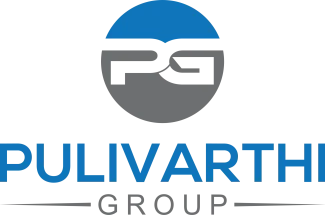Why Hire a Mental Health Program Manager/Coordinator?
Hiring a program manager is not simply adding a layer of administration; rather, it is embedding an accountability engine that converts vision into daily practice. Because program managers coordinate clinical, operational, and financial levers, they help multidisciplinary teams move in the same direction. Additionally, they standardize documentation, monitor outcomes, and reinforce ethical guardrails—thereby improving both patient safety and payer confidence. As a result, throughput improves, staff feel supported, and communities experience better access to timely, culturally responsive care.
- Access & Throughput: Managers design intake triage, define time-to-first-appointment targets, and optimize schedules; therefore, waitlists shrink and no-show rates fall.
- Quality & Safety: With evidence-based protocols and continuous monitoring, care becomes reliable. Consequently, adverse events decline and audits run smoothly.
- Financial Stewardship: Accurate authorizations, coding, and encounter closure reduce denials. Meanwhile, dashboards illuminate productivity and case-mix trends.
- Workforce Stability: Clear roles, predictable huddles, and supportive supervision reduce burnout; thus, turnover and overtime costs decrease.
- Community Impact: Partnerships with schools, shelters, justice systems, and public health agencies expand service reach and strengthen continuity.
Types of Mental Health Program Manager/Coordinator Roles to Hire
Since behavioral health ecosystems vary widely, program leadership adapts to population needs and payer rules. Therefore, clarifying your service model and outcomes targets will shorten time-to-hire and improve long-term fit.
Outpatient Behavioral Health Manager
Aligns psychiatry, therapy, case management, and MAT in clinic settings; thus, authorizations, scheduling, and data capture become consistent across providers.
Integrated Primary Care Coordinator
Implements collaborative care (CoCM) and warm handoffs; moreover, PHQ-9/GAD-7 tracking and registry reviews standardize stepped-care decisions.
Acute & Crisis Services Manager
Oversees PES, crisis stabilization units, and 988 coordination; consequently, diversion from ED and law enforcement improves while safety protocols tighten.
Substance Use & MAT Program Manager
Coordinates buprenorphine, naltrexone, and counseling pathways; additionally, compliance with SAMHSA guidance and state rules remains front-and-center.
Children, Youth & School-Based Coordinator
Builds MOUs with districts, manages IEP/Section 504 interfaces, and streamlines caregiver communication; therefore, access and attendance both improve.
Community & Grant-Funded Program Manager
Runs federal/state grants, performance reporting, and fidelity reviews; as a result, funding renewals and stakeholder trust increase.
Telebehavioral Health Coordinator
Designs HIPAA-compliant virtual workflows, cross-state licensure tracking, and outcome dashboards; meanwhile, rural access expands without sacrificing quality.
Justice-Involved & Reentry Program Manager
Coordinates pre-release screening, continuity meds, and community linkage; accordingly, recidivism risk and avoidable crises both decline.
Staffing Models We Support
Because census and funding cycles fluctuate, flexible staffing protects outcomes. Accordingly, Pulivarthi Group aligns leadership sourcing with your timelines, payer mix, and performance metrics.
- Permanent Placement: Build a stable leadership core with culture and mission alignment.
- Interim/Locum Leadership: Bridge vacancies, leaves, or launches without slowing services.
- Contingent/Project-Based: Add expertise for grant implementations, audits, and system rollouts.
- Turnaround & Launch Support: Stand up new clinics, crisis lines, school partnerships, or MAT expansions with seasoned operators.
- Multi-Site Program Director: Standardize quality and reporting across regions while mentoring site coordinators.
Where to Hire Mental Health Program Manager/Coordinator
Although demand remains high, disciplined sourcing shortens time-to-fill. Therefore, combine association networks, public-health pipelines, and targeted recruiting to reach leaders with proven outcome wins.
- Professional Associations: Network with APA, American Psychological Association, and state mental health associations for operations-focused candidates.
- Public Health & Government: Engage talent from county behavioral health, FQHCs, and grant programs listed via SAMHSA Grants.
- Graduate Programs: Partner with MHA/MPH/MSW programs for emerging leaders trained in quality improvement and health policy.
- Job Boards & Social: Use LinkedIn and sector-specific boards; nevertheless, validate outcomes literacy and payer fluency early.
- Specialized Agencies: Pulivarthi Group pre-vets leaders for metrics, compliance, and people management—so you review a calibrated shortlist, not a long list.
Hiring Challenges (and How to Solve Them)
Behavioral health operations are complex; however, a structured process dramatically reduces mis-hire risk. Therefore, require evidence of measurable outcomes, balanced with cultural alignment and trauma-informed leadership.
- Outcome Signal vs. Title: Job titles vary. Consequently, ask for de-identified dashboards and quarterly initiative recaps to verify impact.
- Payer & Policy Variability: Medicaid and commercial rules differ by state. Thus, evaluate authorization literacy, parity knowledge, and audit experience.
- Burnout Risk: Crisis work strains leaders. Accordingly, discuss staffing ratios, escalation ladders, and wellness boundaries in the interview.
- Change Management: New EMRs or care models fail without buy-in. Therefore, test for stakeholder mapping and communication planning skills.
- Equity & Access: Cultural humility and language access matter. As a result, look for partnerships with community organizations and interpreter services.
Qualifications & Compliance Checklist to Hire Mental Health Program Manager / Coordinator
To ensure safety, quality, and reimbursement, verify education, supervision eligibility, and policy fluency. In addition, confirm familiarity with privacy standards and crisis system coordination.
- Education: Master’s in Health Administration, Public Health, Social Work, Psychology, or related field (or equivalent experience).
- Licensure/Certification (as applicable): LCSW, LMFT, LPC, or RN license where role includes clinical supervision or programmatic oversight requiring licensure.
- Policy & Privacy: HIPAA and 42 CFR Part 2 familiarity—see HHS HIPAA.
- Quality & Measurement: Experience with PHQ-9, GAD-7, C-SSRS, HEDIS-like metrics, and utilization dashboards.
- Crisis & Safety: Exposure to 988 coordination, suicide risk protocols, and duty-to-warn pathways (state-specific).
- Equity & Language Access: Competence with culturally responsive care and interpreter workflows.
Sample Mental Health Program Manager/Coordinator Job Description (Copy & Adapt)
Use this template as a starting point; then, tailor population, payer mix, and platform details to your environment.
Job Title: Mental Health Program Manager / Coordinator
Overview:
Lead day-to-day operations for behavioral health services across (outpatient/ED crisis/integrated primary care/school-based/community). Drive access, quality, and compliance while supporting multidisciplinary teams.
Key Responsibilities:
- Design intake triage, set throughput targets, and manage scheduling templates.
- Standardize clinical pathways; monitor outcomes (PHQ-9/GAD-7/C-SSRS) and report monthly.
- Coordinate payer authorizations, documentation quality, and encounter closure.
- Run huddles, staff meetings, and case conferences; escalate risk per policy.
- Build partnerships with hospitals, schools, shelters, and justice agencies.
- Manage budgets, grants, and audits; ensure HIPAA/42 CFR Part 2 compliance.
- Coach supervisors and team leads; implement CQI and change management plans.
Qualifications:
- Master’s in MHA/MPH/MSW/MA Psych or equivalent experience.
- Experience in behavioral health operations and payer policy.
- Strong data literacy, communication, and trauma-informed leadership.Interview Questions (and What You’re Measuring)
- “Walk us through a time you reduced time-to-first-appointment.” — Process design, bottleneck analysis, and stakeholder alignment.
- “Show a de-identified dashboard you built and how it changed decision-making.” — Data literacy and storytelling.
- “How do you balance productivity targets with clinical quality?” — Ethical judgment and practical tradeoffs.
- “Describe your crisis escalation ladder and roles.” — Safety planning and cross-team coordination.
- “How did you implement a new EMR or telehealth workflow?” — Change management and training discipline.
- “In what ways do you operationalize equity and language access?” — Cultural responsiveness and community partnerships.
When Should You Hire a Mental Health Program Manager/Coordinator?
You should hire proactively when waitlists lengthen, denials rise, or incident-response feels ad hoc. Additionally, program launches—such as integrated primary care, school partnerships, crisis lines, or MAT expansions—warrant immediate leadership bandwidth. Ultimately, early hiring prevents quality drift, protects staff wellbeing, and keeps grant deliverables on track.
How to Evaluate Skills (Beyond the Resume)
Titles rarely convey operational depth; consequently, structured work samples are essential. Therefore, standardize scoring and compare candidates transparently.
- 90-Day Plan: Request a draft with metrics, meeting cadence, and risk priorities.
- Process Map: Ask for a current-state intake map and a future-state redesign with time stamps.
- Dashboard Walkthrough: Provide sample data and assess the candidate’s analysis and actions.
- Scenario Drill: Present an escalation case (suicide risk + no-show) and evaluate the response path.
- Communication Sample: Review a de-identified staff memo or partner update for clarity and tone.
Assessing Cultural Fit
Culture determines sustainability; therefore, align on transparency, compassion, and continuous improvement. Likewise, clarify documentation cadence, meeting rhythms, and decision rights to avoid post-hire friction. Furthermore, emphasize trauma-informed supervision and psychological safety so teams can raise concerns early.
- Scenario Prompts: “A clinician reports moral distress; how do you respond and what changes follow?”
- Values & Communication: Patient-first language, plain-speech updates, and feedback loops.
- Growth Mindset: Appetite for CQI projects, coaching, and reflective practice.
Compensation & Benefits (U.S. Benchmarks)
Pay varies by region, setting, and grant mix; nevertheless, competitive offers typically include leadership stipends, CE funds, licensure reimbursement, and flexibility for hybrid schedules. Moreover, meaningful recognition programs and manageable on-call expectations significantly influence retention.
For workforce trends and occupational data, consult the U.S. Bureau of Labor Statistics. For federal funding and program guidance, monitor SAMHSA updates.
Program SOPs Worth Formalizing (and How to Build Them)
Standard Operating Procedures reduce variation, improve safety, and streamline audits. Hence, build collaboratively with clinical leads, revenue cycle, IT, and community partners; then, pilot with one team, revise, and scale.
- Intake & Triage SOP: Eligibility checks, risk screening, and time-to-appointment targets with escalation triggers.
- Crisis Response SOP: Suicide risk pathways (C-SSRS), involuntary hold criteria (state-specific), and 988 coordination.
- Care Pathway SOPs: Depression, anxiety, SUD/MAT, and co-occurring protocols with step-up/step-down criteria.
- Documentation & Billing SOP: Authorization requirements, encounter closure, and denial management.
- Quality & CQI SOP: Dashboard review cadence, PDSA cycles, and incident review loops.
- Privacy & Data SOP: HIPAA/42 CFR Part 2 safeguards, role-based access, and audit trails (see HHS HIPAA).
- Equity & Language Access SOP: Interpreter workflows, signage, and culturally adapted materials.
Retention Strategies that Actually Work
Retention begins during onboarding and continues through the first year. Consequently, set a 30/60/90 plan, protect focus time, and celebrate milestone improvements publicly. Additionally, rotate high-intensity duties, create peer consults, and sponsor leadership development so managers can thrive, not just survive.
- Predictable Rhythm: Weekly huddles, monthly dashboard reviews, and quarterly strategy resets.
- Protected Admin Blocks: Time for data review, partner outreach, and staff coaching.
- Career Pathways: Senior Program Manager, Regional Director, or Population Health Lead with clear competencies.
- Recognition & Belonging: Impact spotlights, micro-bonuses, and DEI-aligned mentorship.
Hire Mental Health Program Managers/Coordinators with Pulivarthi Group
Pulivarthi Group delivers pre-vetted behavioral health leaders aligned to your mission and metrics. First, we calibrate on population, payer mix, and dashboards. Next, we assess change management, CQI fluency, and crisis coordination. Then, we present a concise shortlist mapped to your scorecard. Finally, we support offers, references, and onboarding—so you accelerate impact without sacrificing quality.






